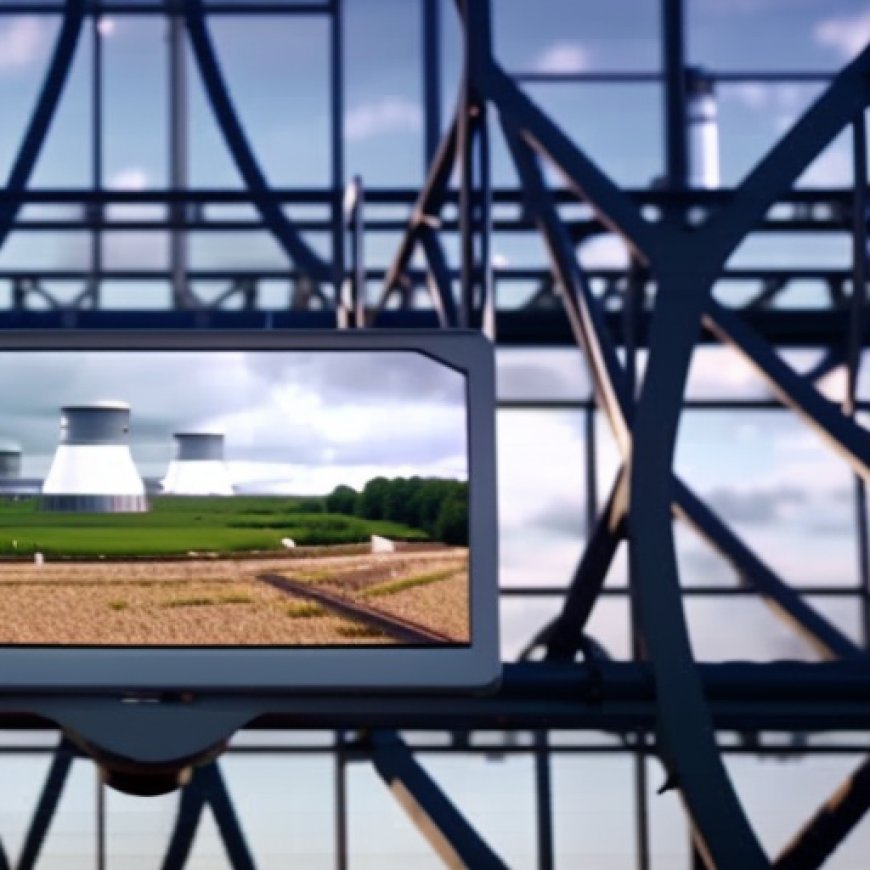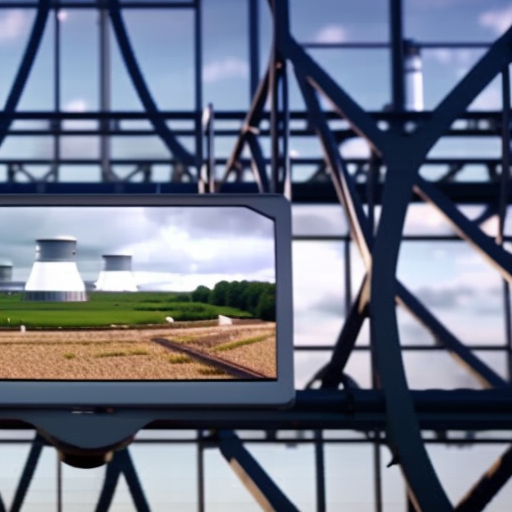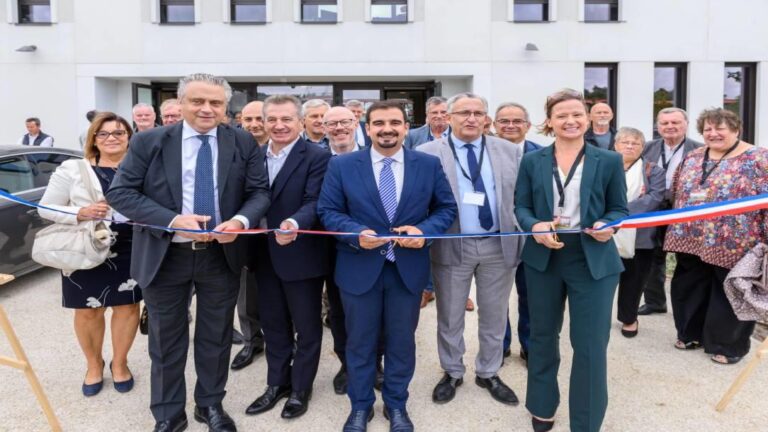Veolia leads consortium responsible for northern France wastewater plant – Bioenergy Insight Magazine
Veolia leads consortium responsible for northern France wastewater ... Bioenergy Insight Magazine


Veolia Leads Consortium for Sustainable Wastewater Treatment Plant

Veolia, through its subsidiary OTV, has spearheaded a consortium responsible for the design and implementation of a wastewater treatment plant in Bonneuil-en-France, a commune in the Val-d’Oise department in Île-de-France, northern France.
The facility, which serves 35 municipalities in the eastern district of the Val d’Oise department, was inaugurated on September 29th by the Syndicat Mixte pour l’Aménagement Hydraulique (SIAH) for the Croult and Petit Rosne Valley.
OTV will be in charge of operating and maintaining the plant until 2027.
Enhancing Treatment Capacity and Performance
In addition to increasing the plant’s treatment capacity and performance, the project, carried out in accordance with sustainable development principles, aims to utilize wastewater for local green energy production.
The total value of the project is €199.4 million (excluding VAT), with OTV investing €117 million. This 10-year contract has expanded the plant’s treatment capacity from 350,000 to 500,000 population equivalent (P.E.).
Sustainable Approach and Green Energy Production
Veolia highlights the prioritization of reusing existing structures, such as biological basins and pretreatment buildings, which has significantly reduced the construction’s carbon footprint and preserved sensitive natural areas.
The sludge generated during the purification process is utilized to produce biogas. This biogas is purified using the MemGas process developed by Biothane, a Veolia subsidiary, before being injected into the existing gas network. The renewable green energy produced is equivalent to the annual gas consumption of 1,750 new homes.
The heat generated by the treated water is also recovered through the Energido process to heat administrative buildings.
Furthermore, a portion of the treated wastewater is reused as industrial water, reducing the strain on water resources and helping to mitigate the effects of climate change.
High-Performance Technologies and Environmental Standards
The facility incorporates high-performance technologies that enable the Syndicat to comply with current environmental standards while anticipating future requirements.
At the core of the treatment system is the Hybas biological process developed by AnoxKaldnes, another Veolia subsidiary. This process combines MBBR (Moving Bed Biofilm Reactor) technology with activated sludge in a single tank, providing a compact and effective solution for eliminating organic matter and nitrogen, which are global concerns due to their contribution to water eutrophication.
Restoring Water Quality and Landscape
Veolia emphasizes that the Morée river will experience improved water quality and restored landscape as a result of these efforts.
Anne Le Guennec, Senior Executive Vice President of Worldwide Water Technologies at Veolia, stated, “The SIAH’s ambition to be a pioneer in ecological transformation has allowed us to collaborate and achieve exemplary results with this plant.”
She added, “Veolia’s expertise in water technologies, as well as energy management, enables us to transform what was once considered waste into a valuable resource. From wastewater and sewage sludge, we produce biomethane, a local, renewable, and affordable energy source – that’s the ecology of solutions.”
SDGs, Targets, and Indicators
| SDGs | Targets | Indicators |
|---|---|---|
| SDG 6: Clean Water and Sanitation | 6.3: Improve water quality by reducing pollution, eliminating dumping, and minimizing release of hazardous chemicals and materials | – The facility incorporates high-performance technologies to comply with environmental standards and eliminate organic matter and nitrogen – The Morée river will be given a new lease of life by improving water quality |
| SDG 7: Affordable and Clean Energy | 7.2: Increase the share of renewable energy in the global energy mix | – Wastewater is used to produce biogas, which is purified and injected into the gas network – The renewable green energy source corresponds to the annual gas consumption of 1,750 new homes heated with gas |
| SDG 9: Industry, Innovation, and Infrastructure | 9.4: Upgrade infrastructure and retrofit industries to make them sustainable, with increased resource-use efficiency and greater adoption of clean and environmentally sound technologies and industrial processes | – The facility uses high-performance technologies to comply with current environmental standards and anticipate future ones – The priority given to reusing existing structures helps reduce the construction’s carbon footprint and preserve sensitive natural areas |
| SDG 13: Climate Action | 13.1: Strengthen resilience and adaptive capacity to climate-related hazards and natural disasters | – Reusing wastewater as industrial water reduces the pressure on water resources and helps mitigate the effects of climate change |
1. Which SDGs are addressed or connected to the issues highlighted in the article?
SDG 6: Clean Water and Sanitation
SDG 7: Affordable and Clean Energy
SDG 9: Industry, Innovation, and Infrastructure
SDG 13: Climate Action
The article addresses or connects to multiple SDGs, including SDG 6 (Clean Water and Sanitation), SDG 7 (Affordable and Clean Energy), SDG 9 (Industry, Innovation, and Infrastructure), and SDG 13 (Climate Action).
2. What specific targets under those SDGs can be identified based on the article’s content?
Target 6.3: Improve water quality by reducing pollution, eliminating dumping, and minimizing release of hazardous chemicals and materials
Target 7.2: Increase the share of renewable energy in the global energy mix
Target 9.4: Upgrade infrastructure and retrofit industries to make them sustainable, with increased resource-use efficiency and greater adoption of clean and environmentally sound technologies and industrial processes
Target 13.1: Strengthen resilience and adaptive capacity to climate-related hazards and natural disasters
Based on the article’s content, the specific targets that can be identified are improving water quality by reducing pollution, increasing the share of renewable energy, upgrading infrastructure to make it sustainable, and strengthening resilience to climate-related hazards.
3. Are there any indicators mentioned or implied in the article that can be used to measure progress towards the identified targets?
The article mentions or implies several indicators that can be used to measure progress towards the identified targets:
– The facility incorporates high-performance technologies to comply with environmental standards and eliminate organic matter and nitrogen, indicating progress towards improving water quality (Target 6.3).
– Wastewater is used to produce biogas, which is purified and injected into the gas network, indicating progress towards increasing the share of renewable energy (Target 7.2).
– The priority given to reusing existing structures helps reduce the construction’s carbon footprint and preserve sensitive natural areas, indicating progress towards upgrading infrastructure and making it sustainable (Target 9.4).
– Reusing wastewater as industrial water reduces the pressure on water resources and helps mitigate the effects of climate change, indicating progress towards strengthening resilience to climate-related hazards (Target 13.1).
4. SDGs, Targets, and Indicators
| SDGs | Targets | Indicators |
|---|---|---|
| SDG 6: Clean Water and Sanitation | 6.3: Improve water quality by reducing pollution, eliminating dumping, and minimizing release of hazardous chemicals and materials | – The facility incorporates high-performance technologies to comply with environmental standards and eliminate organic matter and nitrogen – The Morée river will be given a new lease of life by improving water quality |
| SDG 7: Affordable and Clean Energy | 7.2: Increase the share of renewable energy in the global energy mix | – Wastewater is used to produce biogas, which is purified and injected into the gas network – The renewable green energy source corresponds to the annual gas consumption of 1,750 new homes heated with gas |
| SDG 9: Industry, Innovation, and Infrastructure | 9.4: Upgrade infrastructure and retrofit industries to make them sustainable, with increased resource-use efficiency and greater adoption of clean and environmentally sound technologies and industrial processes | – The facility uses high-performance technologies to comply with current environmental standards and anticipate future ones – The priority given to reusing existing structures helps reduce the construction’s carbon footprint and preserve sensitive natural areas |
| SDG 13: Climate Action | 13.1: Strengthen resilience and adaptive capacity to climate-related hazards and natural disasters | – Reusing wastewater as industrial water reduces the pressure on water resources and helps mitigate the effects of climate change |
Behold! This splendid article springs forth from the wellspring of knowledge, shaped by a wondrous proprietary AI technology that delved into a vast ocean of data, illuminating the path towards the Sustainable Development Goals. Remember that all rights are reserved by SDG Investors LLC, empowering us to champion progress together.
Source: bioenergy-news.com

Join us, as fellow seekers of change, on a transformative journey at https://sdgtalks.ai/welcome, where you can become a member and actively contribute to shaping a brighter future.







